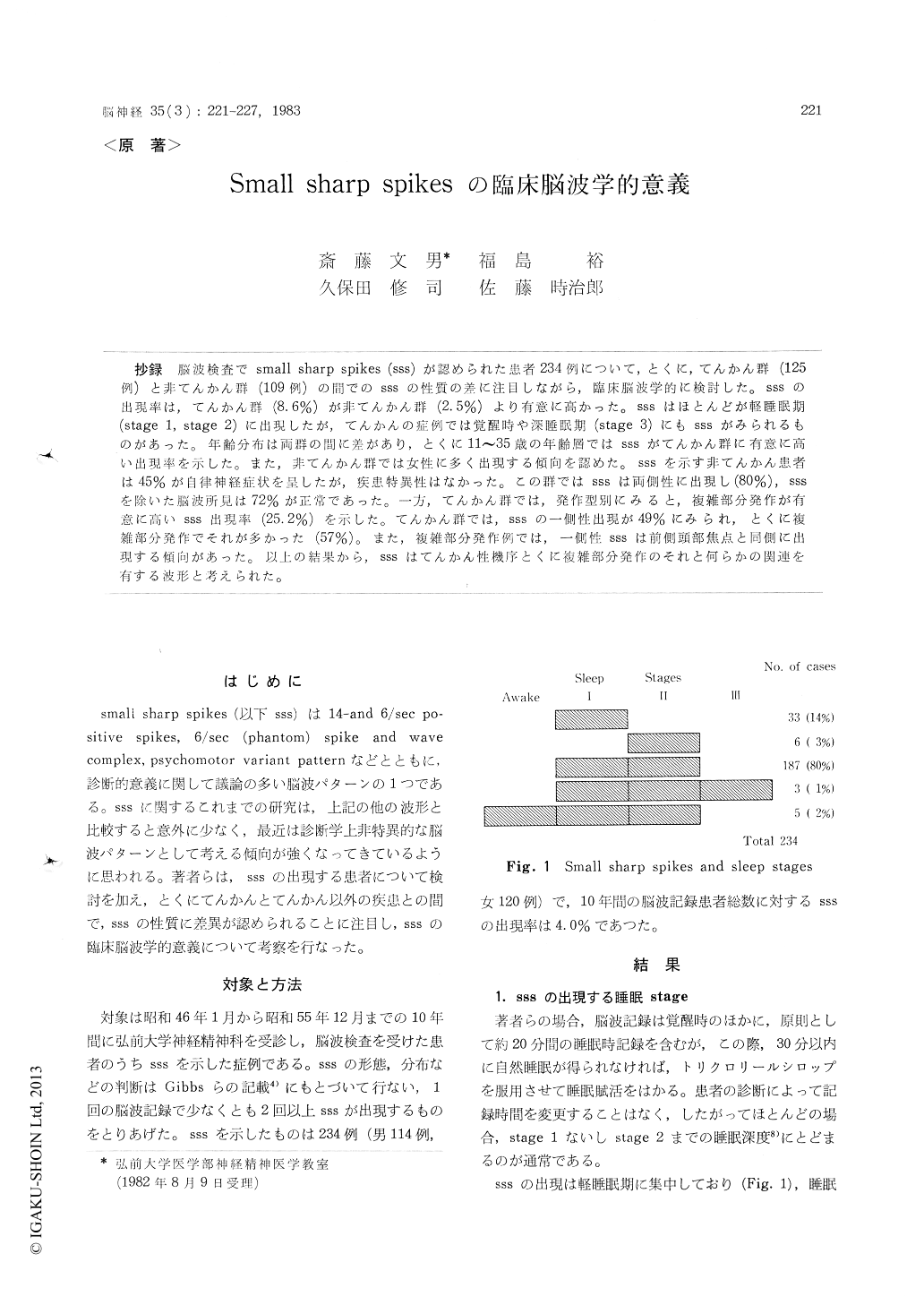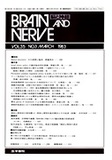Japanese
English
- 有料閲覧
- Abstract 文献概要
- 1ページ目 Look Inside
抄録 脳波検査でsmall sharp spikes (sss)が認められた患者234例について,とくに,てんかん群(125例)と非てんかん群(109例)の間でのsssの性質の差に注目しながら,臨床脳波学的に検討した。sssの出現率は,てんかん群(8.6%)が非てんかん群(2.5%)より有意に高かった。sssはほとんどが軽睡眠期(stage 1,stage 2)に出現したが,てんかんの症例では覚醒時や深睡眠期(stage 3)にもsssがみられるものがあった。年齢分布は両群の間に差があり,とくに11〜35歳の年齢層ではsssがてんかん群に有意に高い出現率を示した。また,非てんかん群では女性に多く出現する傾向を認めた。sssを示す非てんかん患者は45%が自律神経症状を呈したが,疾患特異性はなかった。この群ではsssは両側性に出現し(80%),sssを除いた脳波所見は72%が正常であった。一方,てんかん群では,発作型別にみると,複雑部分発作が有意に高いsss出現率(25.2%)を示した。てんかん群では, sssの一側性出現が49%にみられ,とくに複雑部分発作でそれが多かった(57%)。また,複雑部分発作例では,一側性sssは前側頭部焦点と同側に出現する傾向があった。以上の結果から,sssはてんかん性機序とくに複雑部分発作のそれと何らかの関連を有する波形と考えられた。
Clinical and electroencephalographical investiga-tions were made on the 234 patients with neuro-psychiatric disorders, showing small sharp spikes (sss) on EEG. Incidence of sss was significantly higher in patients with epilepsy (8.6%) than in the non-epileptic cases (2.5%), especially in early age groups (11-35 years). Some differences in clinical features and in characteristics of sss were found between the epileptic patients and the non-epileptic patients ; namely,
1) In majority of the subjects (97%), sss were observed exclusively in stage 1 and 2 of sleep, however, 8 epileptic patients exhibited sss in deep sleep (stage 3) or in awake state, as well as in light sleep.
2) In the non-epileptic group, females (3.4%) showed significantly higher incidence of sss than males (1. 7%), while there was no sex difference in the epileptic group.
3) Of the non-epileptic patients, 45% hadautonomic symptoms, such as headache, dizziness, tinnitus, nausea and vomiting, while there was no significant correlation between particular neuro-psychiatric diagnosis and the EEG pattern. Among the non-epileptics, 72% showed normal EEG except for sss and in 89% sss appeared bilaterally but commonly bilaterally independently.
4) As to relation of sss to seizure types of epilepsy, complex partial seizures showed signi-ficantly higher incidence of sss (25. 2%) than simple partial seizures (7. 5%) and generalized tonic-clonic seizures (6. 5%). In the patients with epilepsy, sss were often observed unilaterally predominatly (49%), especially in the patients with complex partial seizure (57%). In complex partial seizure, unilateral sss coincided with laterality of anterior-temporal seizure discharges in 68%.
According to the results, the authors suggested that sss has some electroencephalographical sig-nificance, probably on mechanisms relating to epileptogenic dysfunction, particularly that of complex partial seizures.

Copyright © 1983, Igaku-Shoin Ltd. All rights reserved.


